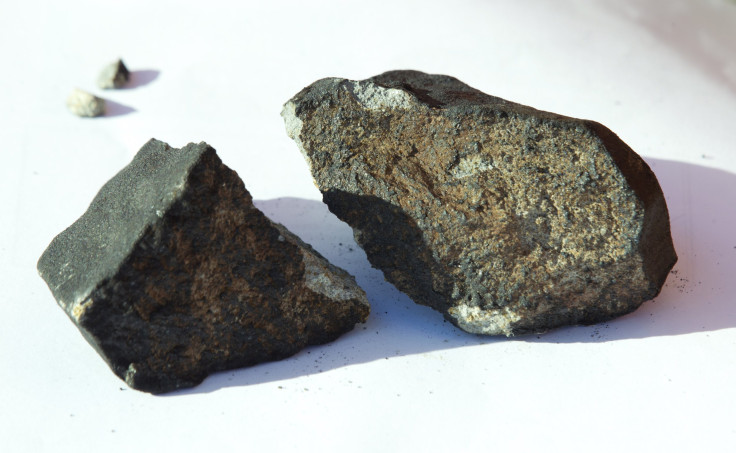Life On Mars? Tissint Meteorite May Contain Organic Carbon, Biologic Proof Of A Once Habitable Red Planet

The Tissint meteorite, a piece of Mars that crashed into Earth in July 2011, may contain proof of ancient life on the red planet, according to a new study. The researchers believe organic carbon found within the meteorite is Martian in origin and may have been created by biologic processes.
The meteorite is one of just 61 that have come from Mars and was one of five that people observed falling to Earth, the New York Times reported. "At about 2 a.m. local time on July 18, 2011, a bright fireball was observed by several people in the region of the Oued Drâa valley, east of Tata, Morocco," according to the Meteorological Society entry. "One eyewitness, Mr. Aznid Lhou, reported that it was at first yellow in color, and then turned green illuminating all the area before it appeared to split into two parts. Two sonic booms were heard over the valley. In October 2011, nomads began to find very fresh, fusion-crusted stones in a remote area of the Oued Drâa intermittent watershed."
Recent research estimates the Tissint meteorite was ejected from Mars about 700,000 years ago and may have been formed 400 million to 500 million years ago. The research team, led by Dr. Yangting Lin, from the Institute of Geology and Geophysics of the Chinese Academy of Sciences in Beijing, provides several reasons for why the organic carbon may have not come from Earth. Nomads discovered the meteorites soon after they were first observed and the black glass surface of the meteorite is evidence of a sudden melting process that couldn't have occurred during its fall or in the three months in the desert. The small veins within the meteorite contain carbon in the form of diamond, a process which couldn't have occurred while it was on Earth, the researchers argue.
Based on the preliminary results, the researchers believe the carbon was formed by biological, or biotic, processes and not environmental, or abiotic, processes. "We cannot and do not want to entirely exclude the possibility that organic carbon within Tissint may be of abiotic origin," Lin said in a statement. The research was published in the Meteoritics & Planetary Science journal.
© Copyright IBTimes 2024. All rights reserved.






















